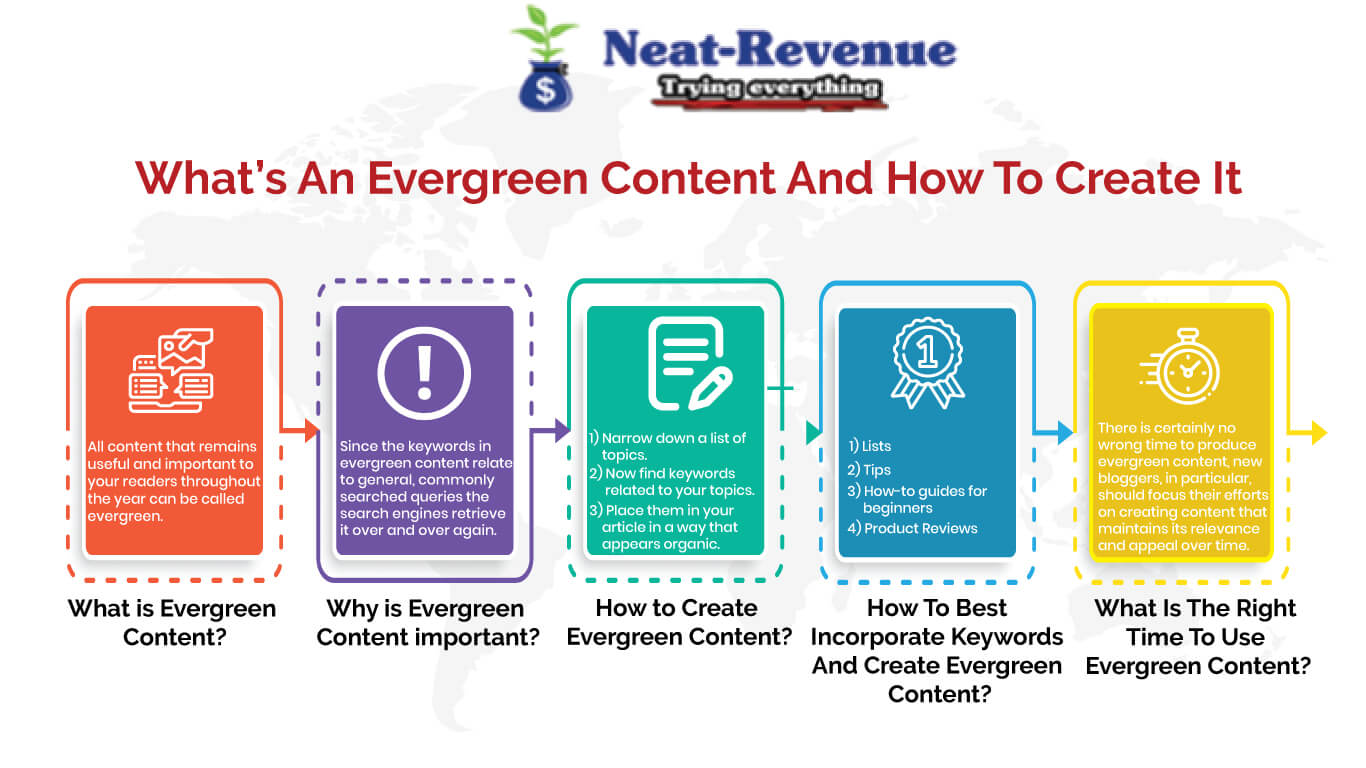How to measure the success of evergreen content – Measuring the success of evergreen content is crucial for any content strategy. By understanding key performance indicators (KPIs) and employing effective tracking methods, you can optimize your content to achieve long-term engagement, conversions, and ROI.
This guide will delve into the essential aspects of measuring evergreen content performance, providing actionable insights and best practices to help you maximize the impact of your content.
Define and Explain Evergreen Content: How To Measure The Success Of Evergreen Content

Evergreen content refers to written material that remains relevant and valuable over an extended period, transcending temporary trends or seasonal changes. Its enduring appeal stems from its timeless topics, universal themes, and practical insights that resonate with audiences regardless of the passage of time.Evergreen content is characterized by its:
- Timeless Topics:It focuses on subjects that are perpetually relevant, such as personal finance, health and wellness, or foundational principles in various disciplines.
- Comprehensive Coverage:It provides in-depth analysis, thorough explanations, and practical guidance on the chosen topic, aiming to be a definitive resource for readers.
- Actionable Insights:Evergreen content offers valuable takeaways and actionable advice that can be applied in real-life situations, making it both informative and practical.
- Well-Researched and Accurate:It is backed by credible sources, reliable data, and expert opinions, ensuring the accuracy and credibility of the information presented.
- Optimized for :Evergreen content is often optimized for search engines, ensuring its discoverability and visibility to online audiences over time.
Examples of successful evergreen content include:
- “The Ultimate Guide to Investing for Beginners”
- “How to Improve Your Mental Health and Well-being”
- “The Essential Guide to Writing Effective Resumes”
- “Understanding the Basics of Quantum Physics”
- “The History and Evolution of Social Media”
By creating evergreen content, businesses and content creators can establish themselves as thought leaders in their respective fields, build a loyal audience, and drive long-term traffic to their websites.
Key Performance Indicators (KPIs) for Evergreen Content
To gauge the effectiveness of evergreen content, specific Key Performance Indicators (KPIs) should be monitored. These metrics provide valuable insights into the content’s reach, engagement, and impact.
Organic Traffic
Organic traffic refers to visitors who land on your website through search engines like Google. A steady stream of organic traffic indicates that your evergreen content is ranking well in search results and attracting a relevant audience.
Engagement
Engagement metrics measure how well your content resonates with your audience. Key engagement metrics include:
- Time on page: The average amount of time visitors spend on your content.
- Bounce rate: The percentage of visitors who leave your website after only viewing one page.
- Shares and comments: The number of times your content is shared on social media or commented on.
Conversions
Conversions refer to specific actions that visitors take after engaging with your evergreen content, such as:
- Lead generation: Capturing email addresses or other contact information.
- Sales: Driving purchases or subscriptions.
- Downloads: Encouraging downloads of resources or whitepapers.
Backlinks
Backlinks are links from other websites to your evergreen content. A high number of backlinks indicates that your content is authoritative and valuable, which can boost its search engine ranking and credibility.
Tracking and Measuring Evergreen Content Performance

Effectively tracking and measuring the performance of evergreen content is crucial to gauge its impact and make necessary adjustments. This involves monitoring key performance indicators (KPIs) over time and using analytics tools and dashboards to gain valuable insights.
One effective method for tracking evergreen content performance is to set up Google Analytics goals. By creating specific goals, such as page views, time on page, or conversions, you can track how users interact with your content and measure its effectiveness in achieving your desired outcomes.
Analytics Tools and Dashboards
Utilizing analytics tools and dashboards can provide a comprehensive view of your evergreen content performance. Google Analytics, for instance, offers robust reporting capabilities that allow you to monitor KPIs such as organic traffic, bounce rate, and average session duration. These insights help you understand how users are finding and engaging with your content, enabling you to make data-driven decisions to optimize its performance.
Analyzing Engagement and Reach

Understanding how your audience interacts with your evergreen content is crucial for measuring its success. Engagement metrics provide insights into how well your content resonates with readers and encourages interaction. Key engagement metrics include:
Social shares
The number of times your content is shared on social media platforms, indicating its reach and virality.
Comments
Stay informed and up-to-date on the latest news and current events. Keep update for your daily newsand stay ahead of the curve with in-depth analysis, expert insights, and breaking news coverage from around the globe.
The number of comments on your content, reflecting reader engagement and the level of discussion it generates.
Dwell time
The average time spent by readers on a page, indicating the level of interest and engagement with your content.Tracking the reach of evergreen content involves monitoring its visibility and distribution across various channels. This includes:
Organic search
Monitoring the ranking of your content in search engine results pages (SERPs) for relevant s.
Social media
Tracking the reach and engagement of your content on social media platforms through metrics such as impressions, likes, and shares.By analyzing engagement and reach metrics, you can gauge the effectiveness of your evergreen content and make informed decisions to optimize its performance.
Evaluating Conversions and ROI
Measuring conversions and tracking return on investment (ROI) are crucial steps in assessing the success of evergreen content. Conversions can be defined as any desired action taken by a user after interacting with the content, such as making a purchase, signing up for a newsletter, or downloading a resource.
To measure conversions, you can use tools like Google Analytics or conversion tracking pixels. These tools allow you to track user behavior and identify which actions were taken after interacting with your evergreen content. By analyzing conversion rates, you can gain insights into the effectiveness of your content in driving desired outcomes.
Tracking ROI for Evergreen Content, How to measure the success of evergreen content
Tracking ROI for evergreen content is essential for understanding the financial impact of your content marketing efforts. ROI can be calculated by comparing the revenue generated from conversions to the costs associated with creating and promoting the content. By tracking ROI, you can determine whether your evergreen content is generating a positive return on investment and make informed decisions about future content strategies.
Stay informed with the latest news and current events by visiting The Motiv. Our dedicated team of journalists provides up-to-date coverage on a wide range of topics, ensuring that you’re always in the know.
Content Quality and Optimization

Content quality plays a pivotal role in the success of evergreen content. High-quality content is informative, engaging, and relevant to the target audience. It provides value to readers and encourages them to return for more. Search engines also favor high-quality content, ranking it higher in search results.
Optimizing Evergreen Content for Search Engines and User Experience
Optimizing evergreen content for search engines involves using relevant s, creating a clear and concise structure, and ensuring that the content is easy to read and navigate. For user experience, the content should be well-written, free of errors, and visually appealing.
- Use relevant s:Identify s that are relevant to the topic of your content. Include these s in the title, headings, and throughout the text. However, avoid stuffing, as it can harm your search engine rankings.
- Create a clear and concise structure:Use headings and subheadings to organize your content and make it easy to read. Keep paragraphs short and to the point, and use bullet points or lists to present information in a clear and concise manner.
- Ensure readability:Use clear and concise language that is easy to understand. Avoid using technical jargon or complex sentence structures. Use active voice and short sentences to make your content more readable.
- Make it visually appealing:Use images, videos, and other visual elements to break up the text and make your content more engaging. However, ensure that the visuals are relevant to the content and do not distract from the main message.
Content Distribution and Promotion
To ensure the success of evergreen content, effective distribution and promotion strategies are crucial. By leveraging various channels, businesses can amplify the reach and engagement of their content, driving traffic and generating leads.
Social media platforms offer a powerful avenue for content distribution. By sharing evergreen content on platforms like Facebook, Twitter, and LinkedIn, businesses can tap into a vast audience and engage with potential customers. Regular posting, utilizing relevant hashtags, and running targeted social media campaigns can help increase visibility and drive traffic to the content.
Email Marketing
Email marketing remains a highly effective channel for promoting evergreen content. By building an email list and segmenting subscribers based on interests, businesses can deliver tailored content directly to their inbox. Regular email newsletters, drip campaigns, and personalized email sequences can nurture leads and drive conversions.
Influencer Outreach
Collaborating with influencers in the industry can significantly extend the reach of evergreen content. By identifying influencers who align with the brand’s values and target audience, businesses can leverage their credibility and following to promote the content. Influencer marketing campaigns can involve sponsored posts, guest blogging, interviews, and product reviews, effectively reaching a wider audience and building brand credibility.
Content Updates and Maintenance
Evergreen content is not static. To maintain its relevance and effectiveness, regular updates and maintenance are crucial. This ensures that the content remains accurate, up-to-date, and aligned with search algorithm changes.
Refreshing content involves adding new information, removing outdated material, and revising existing content to reflect the latest developments. Addressing changes in search algorithms requires understanding algorithm updates and optimizing content accordingly.
Content Refreshing and New Information
- Add new research, data, and insights:Incorporate the latest industry trends, research findings, and case studies to enhance content value.
- Update statistics and examples:Ensure that statistics, examples, and references are current and accurate, replacing outdated information.
- Incorporate new perspectives:Include fresh insights, opinions, and viewpoints to provide a comprehensive and balanced perspective.
Addressing Search Algorithm Changes
- Monitor algorithm updates:Stay informed about search engine algorithm updates and their potential impact on content.
- Optimize for relevance and value:Ensure that content remains relevant to search queries and provides valuable information to users.
- Consider user intent:Understand the user’s search intent and tailor content to meet their specific needs.
Conclusive Thoughts
By following the strategies Artikeld in this guide, you can effectively measure the success of your evergreen content, ensuring that it continues to generate value for your business over time. Remember to regularly track your KPIs, analyze engagement and reach, evaluate conversions and ROI, and optimize your content for ongoing success.